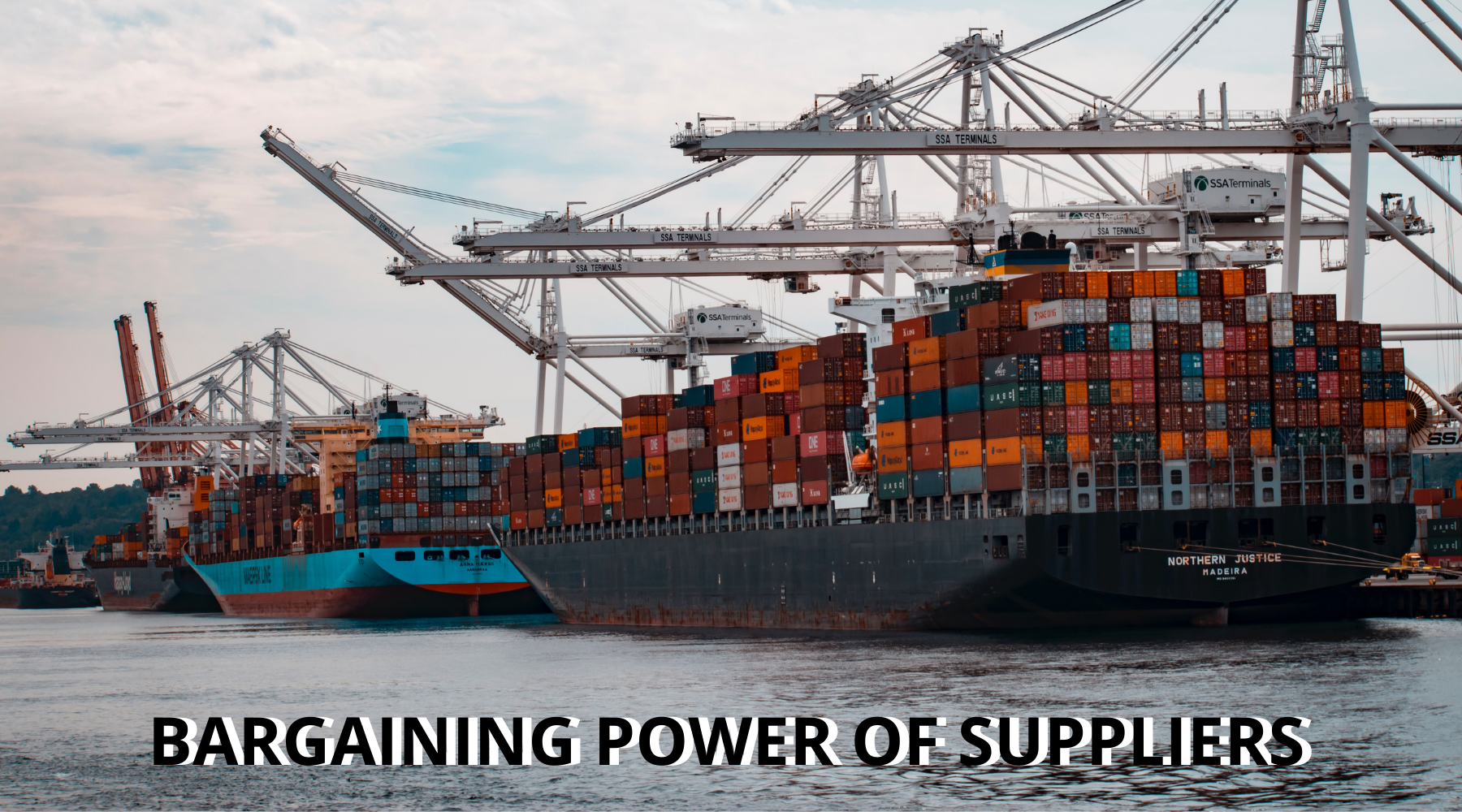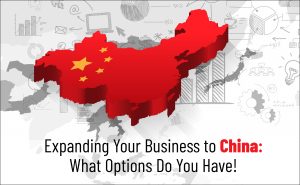In the airline industry, only two significant suppliers exist. Airbus and Boeing control the fuel prices. Thus, the bargaining power of suppliers in the airline industry is very high.
A strong supplier may affect the profitability and quality of products. It may force companies to raise prices.
It is one of the forces in Porter’s Five Forces Industry Analysis Framework. This force is the mirror image of the bargaining power of buyers. It refers to the pressure that suppliers can put on companies.
It can be done by raising their prices, lowering their quality. They can even reduce their products’ availability. The framework is a standard part of business strategy.
This affects the buyers’ competitive environment and profit potential. So, the other forces include buyers’ bargaining power and the threat of new entrants.
In this post, we will show everything you need to know about suppliers’ bargaining power. So, get ready to explore this factor that affects your business.
Types of Suppliers
There are various types of suppliers. A list of types includes:
-
Manufacturers and Vendors
These are producers of either the entire product or components. These feed into the end product manufacturing process.
Additionally, the parts supplied may be generic and have readily available alternates. Then the manufacturer will have less power.
Conversely, suppose the manufacturer has significant expertise or no competing producers. In that case, they will have a significant say in the value chain.
-
Distributors and Wholesalers
These suppliers buy products in large quantities from different companies. They store them and sell them to retailers. So, the products may be sold at higher prices. But then buyers purchase in smaller quantities.
-
Independent Suppliers / Independent Craftspeople
Sell unique products directly to retailers or agents. These people manufacture unique items in small quantities. So, they provide them only through representatives or trade shows.
-
Importers and Exporters
Purchase products from manufacturers in one country. They export it to a distributor in a different country. Hence, they are comparable to domestic distributors/wholesalers for these products.
-
Drop shippers
Suppliers of products for different kinds of companies
Determining Factors: Bargaining Power of Suppliers
Factors that determine the bargaining power of suppliers:
- Relative to buyers, a small number of suppliers.
- Low buyer dependence on a supplier.
- Switching cost (switching costs of suppliers)
- Availability of suppliers for immediate buy.
- Possibility of forwarding integration by suppliers.
When is Bargaining Power of Suppliers High/Strong?
- The switching costs of buyers are high.
- The threat of forwarding integration is high.
- Relative to buyers, a small number of suppliers.
- Low buyer dependence on a supplier.
- The switching costs of suppliers are low.
- Substitutes are unavailable.
- High supplier dependence for the buyer.
When is Bargaining Power of Suppliers Low/Weak?
- The switching costs of buyers are low.
- The threat of forwarding integration is low.
- Relative to buyers, a large number of suppliers
- High buyer dependence for a supplier
- The switching costs of suppliers are high.
- Substitutes are available
- Also, the buyer does not rely heavily on sales from suppliers.
Purpose of Bargaining Power of Suppliers Analysis
Low supplier power creates a more attractive industry. So, it increases profit potential, as suppliers do not constrain buyers.
Significant supplier power creates a less attractive industry. It decreases profit potential. So, this is as buyers rely more heavily on suppliers.
Managing Suppliers
It is in companies’ interest to create and maintain good supplier relations. Some strategies to this end include:
- The first step is to check the cost and value of the entire supply chain. With proper understanding, a supplier’s importance to the process can be evaluated.
- Another critical step is to build two-way relationships with the suppliers. This can enable both parties to work together. It will lower production costs that benefit everyone.
- Companies need to accept accountability for the end of the process. This means putting in orders on time. There are no unnecessary changes later on.
- There need to be performance evaluation metrics. It will keep an objective measure of performance. This will set clear expectations.
- Companies should innovate on their value proposition to reduce excessive reliance on suppliers. The efficacy should be measured through innovation metrics.
- Besides penalties, incentives also need to be established. This will encourage value creation through optimized production and delivery times.
- Critical information about the process needs to be shared with the supplier. This will ensure no delays or unnecessary costs are incurred.
- Open communication channels with the required levels of security and confidentiality are required. It will help strengthen the relationship with suppliers.
- They need to be planned in place for exceptional circumstances and emergencies. Processes must be in place. The risk associated with them can be minimized.
- Contingency plans should be put together. It helps to avoid disruption to the value chain.
- A warning is issued in time and upfront. No penalties should be imposed in such a situation.
- Meaningful meetings focus on the critical issues for value chain improvement and relationships. So, they can strengthen the buyer-seller link.
Powerful Suppliers and the Target Market
The power the supplier chooses to exert differs. It must reflect through prices, product quality, and quantity available. Therefore, too much disruption in any of these areas may even mean that a company can no longer stay in business.
A firm may need to end operations or shift to another industry. So, this will avoid being dictated by a supplier’s whims.
-
Pricing
The first issue a firm has to face is increased costs. A supplier who knows that they cannot be removed may raise prices for their raw material. It may also be ahead of agreed-upon timelines.
Suppose the buyer has no choice but to pay these prices. In that case, the resultant increase in total production cost will either need to be absorbed. It can also be passed on to the consumer.
The profit margin may not allow the company to absorb this pressure. Then it will mean higher market prices.
Sales may suffer because the target market may not be receptive to this change. Therefore, a loss of customers to a competing product or substitute may happen.
-
Supply/Product Availability
Suppose a supplier is unwilling or unable to meet quantity targets. In that case, the company may have to deal with the demand that outweighs supply. Therefore, this can happen either in regular scenarios if the company decides to increase sales.
So, it can also happen in peak sales times. These include holidays or special occasions where people tend to buy more products.
-
Quality Issues
Sometimes the supplier decides to compromise on the quality of the product. So, this is done to bring down costs. This will directly impact the company’s product offering.
Additionally, it may negatively impact the end consumer if the quality issues are significant.
Hence, there may be an increase in returns, complaints, and exchanges. Consumers may make an entire switchover to another product.
-
Dictating Industry Dynamics
Suppose a single large supplier chooses to supply to only individual companies. In that case, it may end up with the power to push companies out of the industry. In these cases, a company will be helpless and unable to save itself.
Suppose a supplier entirely manufactures the product. In that case, they may also choose to design, selling it directly to the customer, often at a lower price.
-
Mitigating Supplier Power
If supplier power becomes too strong in the market, companies will try to reduce this power. Suppose, the demand for the product is high enough.
In that case, there may be ways to develop alternate ways to produce or sell a product.
So, it reduces supplier power. Product re-design or product line diversification may be another way.
Bargaining Supplier Power in the Fast-Food Industry
Suppliers play a vital role in the value chain of the fast-food industry. This means that the bargaining power of suppliers needs to be assessed by every entrant.
In addition, chain restaurants rely on suppliers for food items, packaging, napkins, plates, and spoons.
In addition, we will determine whether McDonald’s faces high or low bargaining power from suppliers. Consider the following analysis:
-
The number of suppliers relative to buyers
The number of suppliers is higher relative to buyers (companies). So, supplier power is low.
-
Massive buyer dependence on supplier
We may assume that suppliers have few customers. E.g., a small/medium-sized firm) is likely to give in to buyers’ demands. But, if we assume suppliers have several customers, they have more power over buyers.
It is not known whether these suppliers have few or many buyers. So, a middle ground would be a reasonable answer. Thus, supplier power is medium.
-
Switching costs
The fast-food industry has many suppliers. So switching costs are low for buyers. Supplier power is low.
-
Forward Integration
The fast-food industry has low forward integration.
McDonald’s faces the low bargaining power of suppliers. So, supplier power is not an issue for McDonald’s in the fast-food industry.
Conclusion
The bargaining power of suppliers alone does not determine the industry’s attractiveness. Additionally, there are other forces also.
The relationship with your vendors should be treated as a strategic negotiation. Therefore, you carefully plan and brainstorm the best ways to do business with them.









